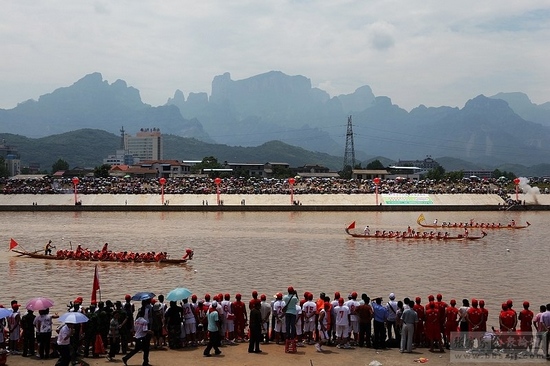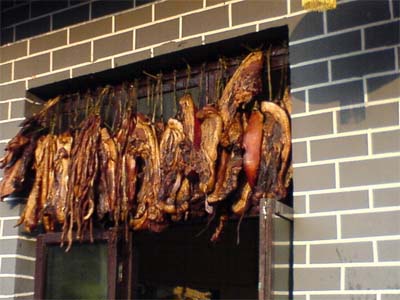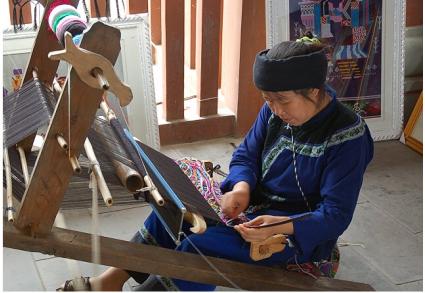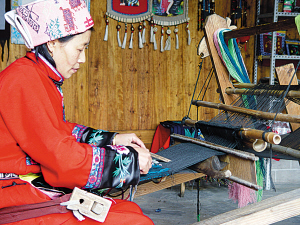-

Based on recent archaeological discoveries, combined with historical records in pre-Qin Dynasty documents, the long process of the Hubei-Hunan Culture that developed on both sides of the Yangtze River, which made significant contributions to the formation and development of ancient Chinese civilization, can now be traced back to the pre-Yandi Shen Nong and Yandi-Huangdi cultures.
Culture
2010-11-23 17:18
View:4037
-

The primitive religions of the Tujia people were quite miraculous in nature and were expressed in four ways; worship of nature, veneration of ancestors, adoration of totems and belief in the Tima.
Culture
2010-11-23 17:15
View:4396
-

The Dragon Boat Festival, which has been observed over a period of more than 2,300 years in China, commemorates the death of Qu Yuan, a poet living in Chu State (todays Hubei and Hunan provinces) during the Warring States (475-221 BC).
Culture
2010-11-23 17:13
View:5023
-

Hunan Embroidery is a folk art with Xiang-Chu cultural characteristics created by the industrious and intelligent people of Hunan during the long period of historical civilization.
Culture
2010-11-23 17:09
View:5666
-

People in general regard food as their major concern. For the Tujia people, their daily diet mostly consists of: rice, millet, corn, white potatoes, sweet potatoes, and various mixtures of these. They prepare their meals in a variety of cooking containers: pots, steamers, and bamboo cookers.
Culture
2010-11-23 17:07
View:5149
-

The Tujia Brocade was also named Xi Lan Ka Pu, it’s made by hand and has a history of about 2,000 years. It was first used in the imperial palace in Qin and Han Dynasties. In Tujia language “ XiLan” means “ bedcover” and “KaPu” means “flower”. So originally, Xi Lan Ka Pu is a kind of bedcover which brocaded with flowers. Now it has developed into a work of art which has various forms, including clothes, bags, carpets and sachets
Culture
2010-11-23 17:06
View:3154
-

The Tujia minority women are skillful in two very distinct kind of embroidery-one that has large pattern and the other that is small and fine. The former type, embroidered with such subjects as the Eight Immortals crossing the sea, or an official of quick promotion, or lions, tigers or birds, is normally produced for household decoration.
Culture
2010-11-23 17:05
View:3158
-

The Tujia minority name themselves bi zi ka. Down through history, the Tujia were humiliated with the name: wuling rude people and: Tujia rude people. These people called Tujia are a distinct group possessing their own oral language, but no written one. Their dialect belongs to the Tibetan-Burmese branch of the common language for daily use in modern Tujia society.
Culture
2010-11-23 16:58
View:4589












